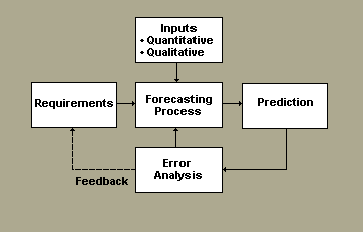
After having introduced the main objectives of this blog, let's get down to business. The estimates of the future in this blog are not the result of a "vision" so much as a process. This process considers several important trends and components in a way that is quasi-scientific – i.e., evidence-based, albeit obviously without rigorously controlled experiments, hence the quasi. To be as cautious as possible, I try to use techniques of historical analysis, where sometimes scant evidence is combined with other evidence in a conservative, balanced way to reconstruct a person, place, or time. In this case, the “history” is the present trends for each of the components considered.
The components that go into the process of predicting the future can be summarized as follows:
First and foremost, bring an open mind. Leave preconceptions of the future at the door, they contaminate the productive execution of the process. With an open mind you can go to the future with a clean slate, and see things that may surprise you.
Technological – based on past and present trends, the likely rate of advance of the technologies needed for the applications and products discussed. I will sometimes give estimated times of arrival for these techs, but often the range is quite wide, because many depend on the continued advancement and convergence of many different technologies, each with their own rates of advance and market dynamics.
Consumer demand – this is the pull for the techs discussed. This is both the likely adoption and/or lack thereof based on past and present trends. One of the key consumer demand trends that I use as an organizing principle is the “imagination actualization” trend I will describe shortly.
Market dynamics – the assumption that these products will be manufactured in the most cost-effective way to meet consumer demand, while being subject to the same forces as today, i.e. liability considerations, etc.
Legal, Ethical, and Moral – this is often overlooked, but the law will still be around in the future, and will be a hugely motivating force to the presumably large corporate entities making most of these products. Then as now, these firms will have substantial liability considerations that will maximize their attention to making products that are safe and controllable, while meeting the richness of consumer demand. Many of the ethical dilemmas encountered here are almost as strange as the technology itself, as we'll get into in another post.
Most of the predictions that I’ve seen seem to take just one or two of these components and consider them in relative isolation. This can provide an interesting perspective on the future, but tends to drape them in vagueness, and though I’m often excited afterwards, always have a bunch of gnawing questions. However, when considered holistically, as a set of interacting, loosely coupled drivers, using one to decide which path to choose at a fork in the road reached with another, predictions can become dramatically more specific and detailed, while remaining quite reasonable.
This process is behind every prediction in this blog, large or small, without exception.
Just as important as the trends shaping the future are the psychological pressures experienced by people living in the future. These can already be discerned today, and are described in the next post, Imagination Actualization in the Noisy Future.
No comments:
Post a Comment